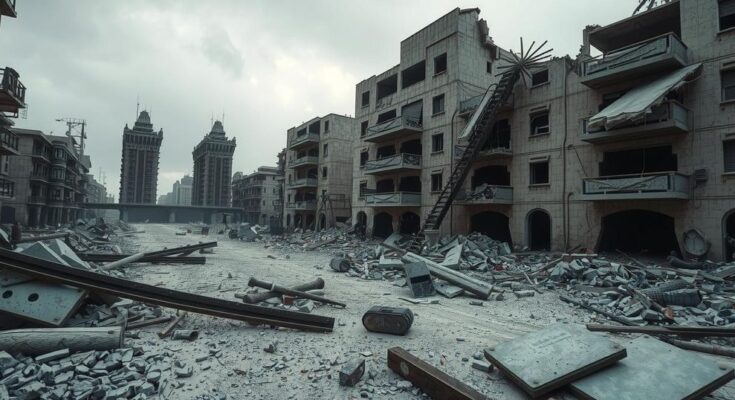The US bombing campaign in Yemen has intensified, leading to increased civilian casualties and destruction, worsening the humanitarian crisis. Aid organizations report significant operational challenges due to legal risks and aid cuts, as the Houthi movement remains a formidable entity in the region. The ongoing conflict raises concerns about the future of humanitarian assistance.
The intensification of the US bombing campaign in Yemen has resulted in civilian casualties and further destruction, exacerbating the already critical humanitarian crisis. Local residents, humanitarian workers, and human rights organizations have voiced concerns following substantial reductions in aid after former President Donald Trump’s cuts. Siddiq Khan, the country director for Islamic Relief Yemen, expressed uncertainty regarding the implications of the escalating bombings, stating, “Now the rampant bombing has started, you never know which way things will go.”
For over two weeks, US airstrikes have been targeting the Houthi movement, responsible for controlling much of Yemen, in retaliation for their alleged assaults on commercial shipping in the Red Sea. President Trump emphasized the gravity of the military actions, declaring the consequences would be unprecedented. Ironically, certain details surrounding the military operations were revealed through a public mishap involving a journalist who accessed private communications among US officials, which included specific remarks about the operations.
The US campaign has impacted major cities, such as Sana’a, Hodeidah, and Sa’ada, with bombings occurring in densely populated areas. Human rights experts, including Niku Jafarnia from Human Rights Watch, reported that civilian casualties are inevitable under the circumstance, especially when attacks occur at night. Despite ongoing operations, the assessment of the situation remains challenging due to limited access to bomb sites.
Reports from the Houthi-managed Saba news agency and independent sources indicate severe civilian harm, with allegations of war crimes being attributed to the US. The Yemen Data Project documented a significant toll from the initial week of bombings, confirming at least 25 civilian deaths, including four children. Moreover, the UN has verified reports of children killed or missing as a direct consequence of the ongoing airstrikes.
The ramifications of a decade-long conflict have devastated Yemen’s fragile economy, leading to an acute need for humanitarian aid among approximately 19 million individuals, which includes 15 million women and children. UNICEF reported alarming rates of malnutrition among young children. The strain on the aid sector is compounded by severe cuts to USAID and the designation of the Houthis as a terrorist organization, forcing aid groups into difficult legal and operational predicaments.
Khan from Islamic Relief articulated concerns over the diminishing humanitarian efforts, noting that many organizations are downsizing or entirely ceasing operations due to the increased risks associated with the bombing campaign and recent policy changes. This decline in humanitarian presence poses a looming catastrophe for Yemen, with emergent fears for aid worker safety complicating service delivery. The ongoing conflict, characterized by the participation of multiple states, including Saudi Arabia, leads to skepticism regarding the efficacy of US bombing strategies against the resilient Houthi forces.
The recent escalation of US bombing in Yemen has significantly worsened the humanitarian situation, resulting in civilian casualties and further destruction in an already devastated country. While the US aims to counter the Houthi influence, substantial reductions in aid coupled with heightened operational risks for humanitarian organizations threaten a collapse of essential services. The ongoing conflict, marked by multiple state actors, calls into question the overall effectiveness of these military operations in achieving lasting peace and stability in Yemen.
Original Source: www.theguardian.com




